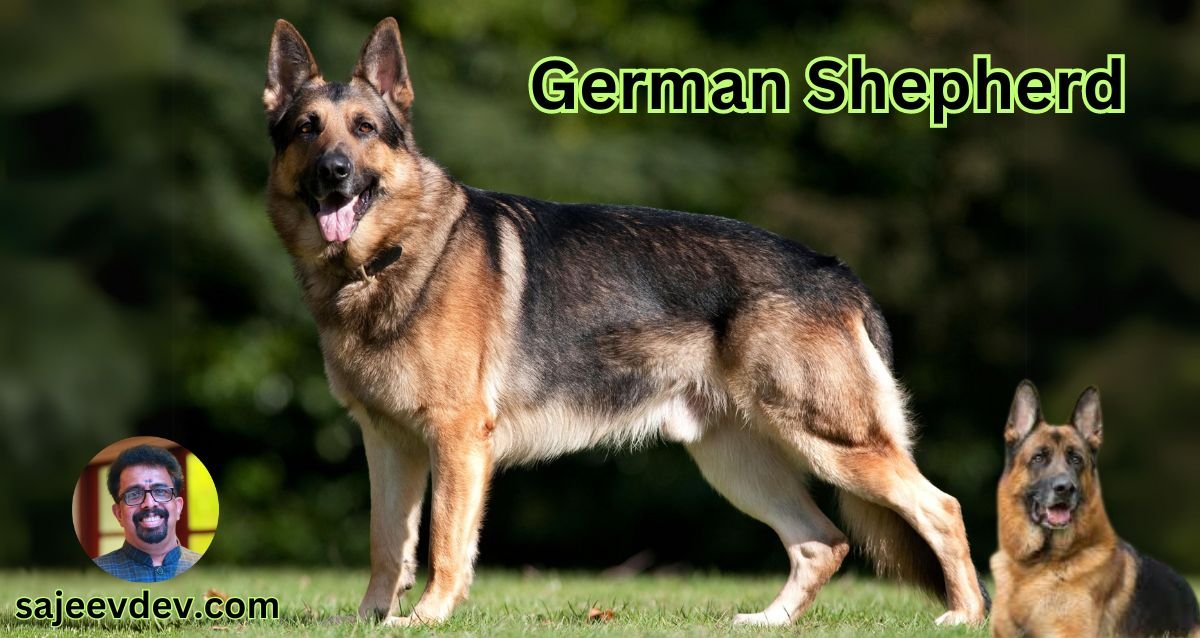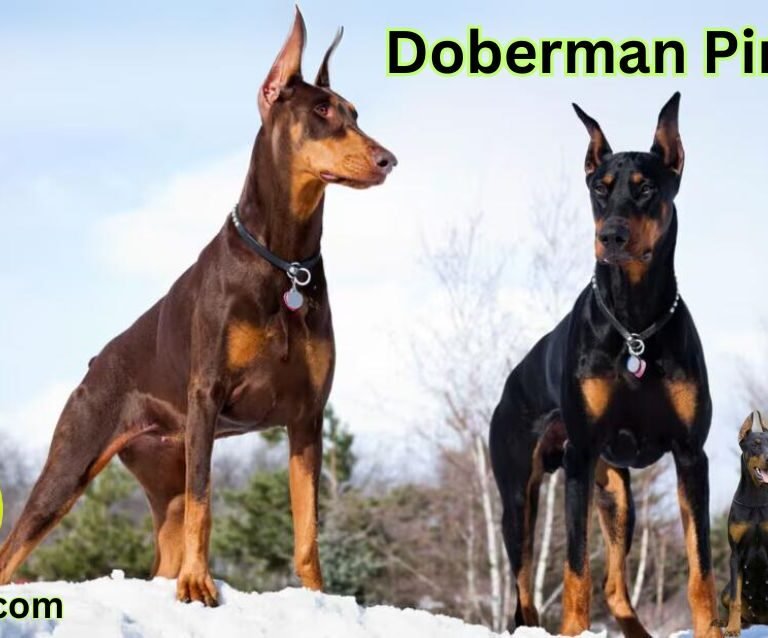German Shepherd
The German Shepherd is a highly regarded breed, characterized by its intelligence, versatility, and loyalty. Originally developed in Germany in the late 19th century, this breed has become one of the most popular dogs worldwide, beloved for both its physical attributes and temperament. With a strong and muscular build, the German Shepherd typically exhibits a keen expression that aligns with its role as a working dog.
One of the factors contributing to the German Shepherd’s widespread appeal is its adaptability. These dogs excel in various settings, whether as affectionate family companions, skilled service animals, or dedicated working dogs in law enforcement and military operations. Their innate intelligence allows them to learn commands and tasks with ease, making them exceptional candidates for specialized training. This adaptability also extends to their living environments; they can thrive in both urban and rural settings, given they receive adequate exercise and mental stimulation.
The breed’s loyalty and protective nature make it a preferred choice for families, as German Shepherds are known to form strong bonds with their human companions. This trait, combined with their protective instincts, allows them to serve as excellent guardians for homes. Additionally, their ability to sense human emotions often leads them to act as emotional support animals, providing comfort to those in need. Furthermore, their dominant presence and intelligence lend themselves well to various roles in service and competition, such as search and rescue operations, therapy, obedience trials, and more.
In summary, the German Shepherd is more than just a popular breed; it is a versatile and dependable companion that has earned its esteemed reputation through its numerous contributions to society. From family pets to working dogs, the German Shepherd’s characteristics, adaptability, and strong bond with humans make it a favored choice across the globe.
Historical Origins of the German Shepherd
The German Shepherd breed has its roots deeply embedded in the late 19th century, a period marked by breeding initiatives aimed at improving herding dogs in Germany. The genesis of this breed can be traced to a desire among herdsmen to develop a canine that would excel in the management and protection of livestock. Initially, a variety of German herding breeds, including the German Sheepdog and various regional shepherd dogs, contributed to the formation of what we now recognize as the German Shepherd.
Max von Stephanitz, a pivotal figure in the breed’s history, played an instrumental role in its establishment. In 1899, he acquired a dog named Hektor Linksrhein, whom he recognized as possessing the ideal traits for herding and guarding. Hektor was subsequently renamed “Horand von Gra frath,” and became the first registered German Shepherd. Von Stephanitz believed that this breed should exemplify intelligence, strength, and loyalty, qualities essential for effective work as a herding companion.
The original purpose of the German Shepherd was to serve as a versatile working dog, adept at herding sheep and protecting them from potential threats. As time progressed, selective breeding practices began to emphasize specific traits that defined the breed’s contemporary characteristics. This focus on attributes such as physical strength, endurance, and intelligent temperament led to the development of a dog that is not only an exceptional herder but also serves well in roles such as police work, search and rescue, and as service animals.
The German Shepherd’s evolution from a humble herding dog to one of the most recognizable and versatile breeds worldwide is a testament to the careful and intentional breeding practices established in Germany. Today, these dogs retain their foundational traits of loyalty, bravery, and intelligence, ensuring their place as noble companions and dedicated working partners.
Characteristics of the German Shepherd
The German Shepherd is renowned for its distinct physical and temperamental characteristics. Physically, this breed is large, strong, and well-proportioned, typically standing between 22 to 26 inches tall at the shoulder and weighing between 50 to 90 pounds. Their striking appearance features a strong, muscular build, a bushy tail, and upright ears, which contribute to an overall impression of confidence and strength. The coat is dense and can manifest in various colors, with black and tan being the most recognizable. These physical traits not only contribute to the breed’s aesthetics but also serve practical purposes, such as protection and agility.
Temperamentally, German Shepherds are distinguished by their intelligence, loyalty, and protective nature. They are highly trainable and excel in various canine activities, including obedience, agility, and protection sports. Their keen intelligence enables them to understand commands quickly and to take initiative, which can be both an asset and a challenge for owners. This breed often requires mental stimulation and engaging activities to channel their energy positively. As a result, they are frequently seen in roles such as service dogs, police dogs, and search-and-rescue animals.
Loyalty is another defining characteristic that sets the German Shepherd apart. They develop strong bonds with their human companions and thrive on interaction and companionship. This loyalty often translates into a protective instinct, making them exemplary guardians of their family and home. However, this protective nature can manifest as wariness of strangers, which necessitates early socialization and exposure to varied environments and people to ensure well-rounded behavior.
In conclusion, the combination of intelligence, loyalty, and protective abilities makes the German Shepherd a remarkable and versatile companion. Their unique physical attributes enhance their role, while their behavioral traits require responsible ownership that fosters a balanced and healthy relationship with both the dog and the surrounding community.
The German Shepherd’s Role in Law Enforcement and Military Work
The German Shepherd has long been recognized for its exemplary capabilities in law enforcement and military roles, making it one of the most favored breeds in these fields. Renowned for their intelligence, loyalty, and versatility, German Shepherds are utilized in various capacities, including search-and-rescue operations, patrol duties, and detection of explosives and narcotics. Their heightened sense of smell and keen instincts enable them to excel in tracking and apprehending suspects, which is crucial for operational success.
In police work, German Shepherds often serve as K9 units, assisting officers in crowd control and suspect apprehension. Their powerful physiques and protective instincts make them formidable partners for law enforcement personnel. Moreover, their capacity for learning and adaptability allows them to undergo specialized training that enhances their effectiveness in specific situations, such as apprehending dangerous criminals or locating missing persons.
In military contexts, German Shepherds have been employed in various warfare applications, from scouting missions to detecting landmines and IEDs (improvised explosive devices). Their ability to navigate diverse terrains and environments has proven beneficial in numerous military operations, particularly in conflict zones where human lives are at risk. Notable examples of this breed’s contributions can be found in the stories of heroic military dogs that have aided soldiers in critical missions, receiving commendations for their bravery and dedication.
While the contributions of German Shepherds in law enforcement and military work are substantial, challenges do exist. The emotional well-being of working dogs is paramount, as the stress of their duties can affect their health and performance. Proper care, training, and rehabilitation are essential to ensure these noble companions are prepared for their demanding roles while maintaining a balanced life. In conclusion, the blend of intelligence, strength, and loyalty embodied by German Shepherds significantly enhances public safety and military effectiveness, underscoring their invaluable service to society.
Understanding the Danger Level of German Shepherds
German Shepherds are frequently perceived as dogs with a moderate to high danger level. This reputation largely stems from their natural instincts, protective nature, and the training they receive. Regarded as one of the most versatile working breeds, these dogs are often employed in police and military roles due to their intelligence, strength, and loyalty. However, it is essential to understand the factors contributing to their perceived danger rather than viewing the breed solely through a lens of aggression.
A significant aspect of the dangers associated with German Shepherds relates to their protective instincts. When they sense a threat to their family or territory, their instinctual response can lead to defensive behavior. This protective drive has been shaped by selective breeding, which highlights such characteristics. Furthermore, the underlying fears and insecurities that some German Shepherds may experience can result in defensive aggression, particularly if they have not been properly socialized and trained. Lack of exposure to various environments and situations can lead to anxiety, which may trigger aggression as a means of self-defense.
Additionally, the role of the owner is pivotal in shaping a German Shepherd’s behavior. Responsible ownership includes consistent training, socialization, and a thorough understanding of canine body language. Owners who do not acknowledge the responsibility that comes with handling such a breed may inadvertently contribute to behavioral issues. It is crucial for German Shepherd owners to remain vigilant, ensuring that their dogs are well-adjusted through positive reinforcement training and opportunities for social interaction with a variety of people and other animals.
The danger level associated with German Shepherds is a complex issue that requires nuanced understanding. By recognizing their protective instincts and the importance of proper socialization and training, prospective and current owners can help foster a balanced and safe canine companion.
The Importance of Training and Socialization
Proper training and socialization are vital components in raising a well-adjusted German Shepherd. As intelligent and versatile dogs, they thrive on learning and require consistent guidance to channel their energy positively. The formative months of a German Shepherd’s life are crucial; early experiences can significantly shape their behavior. Adequate socialization during this period will expose them to various environments, people, and other animals, fostering confidence and reducing the likelihood of fear-based aggression.
A structured training regimen should start as early as possible. Basic obedience commands such as sit, stay, and come form the foundation of more advanced training. These skills not only enhance communication between the owner and their German Shepherd but also instill discipline. Positive reinforcement techniques, such as rewarding desired behaviors with treats or praise, have proven effective in motivating these dogs. Consistency in training helps reinforce good behavior and ensures the dog understands expectations.
In addition to basic obedience, social experiences should include interactions with other dogs and people. Puppy classes can be an excellent resource for facilitated socialization, allowing German Shepherd puppies to engage with their peers under supervision, fostering good manners and adaptability. Exposure to various sights, sounds, and situations ensures that they remain calm and secure in diverse situations, which is particularly beneficial given their natural protective instincts.
Mitigating aggressive behaviors through proactive training methods is essential for responsible ownership. German Shepherds, known for their loyalty and protectiveness, must learn to differentiate between genuine threats and everyday interactions. As they grow, reinforcing correct responses to stimuli will help them become balanced, trustworthy companions. Equipping your German Shepherd with excellent training and social skills paves the way for a harmonious relationship with both the owner and the community.
Recognizing and Managing Protective Behavior
German Shepherds, known for their intelligence and loyalty, often exhibit protective behaviors as part of their inherent guarding instincts. Recognizing these behaviors involves observing the dog’s reactions to various stimuli in their environment. Signs of protective behavior may include heightened alertness, barking, and positioning themselves between their owner and perceived threats. It is crucial for owners to differentiate between normal protective responses and aggressive tendencies that can arise from fear or insecurity.
A typical protective German Shepherd will assess situations calmly, showing caution without undue aggression. They may bark at strangers or unfamiliar noises but can be calmed through reassurance from their owner. Conversely, an overly aggressive reaction to benign stimuli might indicate a problem that requires intervention. This distinction is vital, as a dog that displays consistent aggression may pose a danger both to itself and others.
Managing protective behavior in German Shepherds focuses on training and socialization. Early socialization is essential; exposing the dog to a variety of environments, people, and other animals helps them develop confidence and reduces the likelihood of fear-based aggression. Positive reinforcement training techniques can encourage desired behaviors while discouraging unwanted aggression. Commands such as “stay” or “leave it” can be particularly effective in redirecting a dog’s focus when they become overly protective.
Owners should also be mindful of their own reactions, as dogs often mirror the emotions of their handlers. Maintaining a calm demeanor and providing clear guidance can alleviate a dog’s anxiety about specific situations. Engaging in training classes with a professional dog trainer can also be beneficial for mastering these skills. Ultimately, a well-managed protective instinct contributes to a safer environment for the dog and those around it, promoting a harmonious relationship based on trust and respect.
Living with a German Shepherd: Tips for Responsible Ownership
Owning a German Shepherd is a rewarding experience that requires commitment and understanding to ensure a harmonious household. One of the most crucial aspects of responsible ownership is meeting the exercise needs of this active breed. German Shepherds require at least one hour of vigorous exercise daily to maintain their physical health and mental wellness. Activities such as walking, running, or engaging in games like fetch can be beneficial. Incorporating a variety of physical exercises into your routine also helps in keeping them mentally stimulated and prevents boredom-related behaviors.
In addition to physical activity, it is vital to provide mental stimulation for your German Shepherd. This breed is intelligent and thrives on challenges that engage their mind. Puzzle toys, obedience training, and interactive games can help prevent excessive chewing and digging. Regular training sessions not only enhance their manners but also strengthen the bond between the owner and the dog. Offering opportunities for socialization, whether through playdates with other dogs or visits to the dog park, is another effective way to stimulate their minds while helping them develop essential social skills.
Establishing clear boundaries is essential for responsible ownership. German Shepherds are strong and protective by nature, making it necessary to set rules from an early age. Consistency in training and discipline helps them understand what behaviors are acceptable. Positive reinforcement should be employed to encourage good behavior, ensuring the dog feels secure and confident in their environment. Additionally, providing a safe and designated space for rest and relaxation is crucial in helping them develop a sense of belonging. By incorporating these strategies into daily routines, owners can create a positive living environment that allows their German Shepherd to thrive.
The Balance of Loyalty and Responsibility
In considering the fascinating world of the German Shepherd, it is essential to acknowledge both the loyalty these dogs exhibit and the responsibilities they entail for their owners. Throughout this article, we have explored the origins of the breed, highlighting its history as a working dog that evolved from herding and protection roles in Germany. This background underscores the inherent traits of intelligence, strength, and an unwavering loyalty to their families.
The characteristics of the German Shepherd, including their protective nature and adaptability, make them excellent companions for various households. However, it is imperative to realize that with their loyalty comes the need for diligent and responsible ownership. Prospective owners should be equipped with the knowledge to meet their exercise, training, and socialization needs. Failure to provide adequate care can lead to behavioral issues and potential conflicts within the household.
Moreover, the significance of establishing a well-structured environment cannot be overstated. This breed thrives in scenarios where they are mentally stimulated and physically active. Various activities such as obedience training, agility sports, and interactive play can enhance their well-being and strengthen the bond with their owners. Responsible ownership, therefore, encompasses not only meeting these basic needs but also a commitment to training and social interaction, allowing German Shepherds to flourish as loyal companions.
As you consider the decision to adopt or care for a German Shepherd, take time to reflect on the dedication required in facilitating a successful partnership. The balance between enjoying their loyalty and fulfilling your responsibilities as an owner is key to a harmonious relationship. By embracing this duality, you can ensure a fulfilling experience for both you and your German Shepherd.









